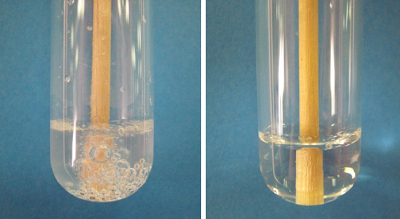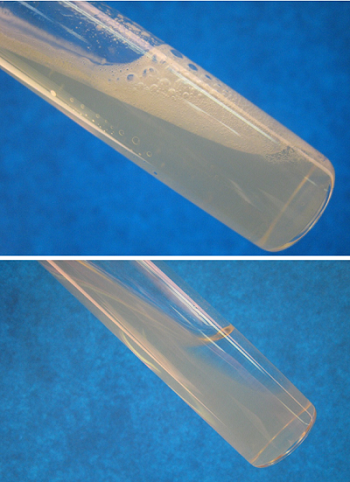Catalase test - Purpose, Principle, Biochemistry, Procedure, Result, Interpretation
Introduction to Catalase test
The biochemical test catalase test is used to determine if the test microorganism can produce the catalase enzyme which is able to decompose hydrogen peroxide to release oxygen and water.
Purpose of Catalase test
The purpose of the catalase test is to determine if microorganism is able to produce the catalase enzyme.
The enzyme catalase is a hemeprotein, a large class of metalloprotein that contains a heme prosthetic group. In catalase, the prosthetic group is made up of four atoms of trivalent iron (ferric-Fe+++) per molecule which functions in oxygen reduction.
The importance of the catalase enzyme lies in its ability to protect the cell from oxidative damage by reactive oxygen species (ROS) and due to its very high turnover numbers - one catalase molecule can decompose millions of hydrogen peroxide molecules.
Catalase test-positive organisms (both aerobic and facultative anaerobes) depend on the cytochrome system for the production of catalase. If an organism lacks the cytochrome system, usually, they also do not produce catalase enzyme.
Principle, Biochemistry of Catalase test
The principle and biochemistry of catalase test can be explained on the molecular level.
In microorganisms, aerobic breakdown of sugars takes place resulting in the formation of hydrogen peroxide (H2O2). In the presence of gaseous oxygen, reduced flavoproteins (FPH2) undergo electron reduction to form hydrogen peroxide and oxidized flavoprotein (FP).
FPH2 + O2 → FP + H2O2
If hydrogen peroxide, which is toxic, continues to accumulate, the bacteria will die. During the decomposition of H2O2 by catalase, one acts as a donor while the other acts as a substrate. The donor donates hydrogen ions to the substrate, reducing it to form a reduced substrate (H2O) and oxygen gas (which is an oxidized donor).
H2O2 (acts as donor) + H2O2 (acts as substrate)→ (catalase enzyme) → 2H2O + O2

Fig: slide catalase test - positive (top), negative (bottom) (Source: American Society of Microbiology)
Procedure of Catalase test
The procedure of the catalase test involves the slide method and the tube method.
Slide method
Pick a fresh pure colony of test microorganisms (careful not to pick up any agar, especially BA) and place it on the center of a clean, grease-free slide
Add 1-2 drops of 3% H2O2 to the test organism placed on the slide with the help of a dropper
Observe for immediate bubble production (gas release)
Tube method
(simple tube method)
Add 4-5 drops of 3% H2O2 to the test tube
Pick a fresh pure colony of test microorganisms (careful not to pick up any agar, especially BA) and place it into the test tube
Observe for immediate bubble production (gas release)

Fig: Tube catalase test - positive (left), negative (right) (Source: American Society of Microbiology)
(slant tube method)
Directly add 1-2 drops of 3% H2O2 to a fresh culture of test bacteria that has been grown in nutrient agar slant
Observe for immediate bubble production (gas release)

Fig: Slant tube catalase test - positive (top), negative (bottom) (Source: American Society of Microbiology)
Result, Interpretation of Catalase test
The result and Interpretation of Catalase test is as follows:
Positive
Immediate gas bubble production is seen due to the release of oxygen.
Negative
No gas bubble is produced.
Catalase positive organism
The list of catalase-positive organisms are:
Micrococcus
Staphylococcus
Bacillus
Corynebacterium diphtheriae
Listeria
Citrobacter
E. coli
Enterobacter
Klebsiella
Shigella
Yersinia
Proteus
Salmonella
Serratia
Nocardia
Burkholderia cepacia
Mycobacterium tuberculosis
Rhodococcus equi
Pseudomonas
Aspergillus (mold)
Cryptococcus (fungi)
Catalase negative organism
The list of catalase-negative organisms includes:
Streptococcus
Clostridium
Enterococcus spp.